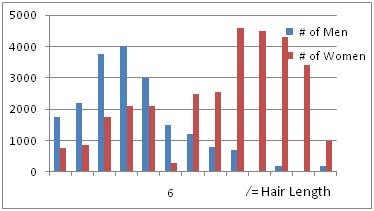ECE662: Statistical Pattern Recognition and Decision Making Processes
Spring 2008, Prof. Boutin
Collectively created by the students in the class
Contents
[hide]Lecture 2 Lecture notes
Jump to: Outline| 1| 2| 3| 4| 5| 6| 7| 8| 9| 10| 11| 12| 13| 14| 15| 16| 17| 18| 19| 20| 21| 22| 23| 24| 25| 26| 27| 28
Topic: "Decision hypersurfaces"
Making decisions is the art of drawing hypersurfaces.
The following Hypersurfaces are discussed in this lecture:
- Linear Separations
- Straight lines in 2D $ ax+by+c=0 $
- Planes in 3D $ ax+by+cx+d=0 $
- Hyperplanes in nD $ \sum a_i x_i = \textrm{constant} $
- Union of linear separations
- Tree-based separation
Combining Hypersurfaces
Hypersurfaces are combined by multiplication of the functions which define them, not by intersection.
Tree Based Separation
By using union of hypersurfaces, classes can be separated by a tree based structure. Tree based separation is harder, and obtaining an optimum decision tree is another difficult problem in pattern recognition.
Example:
Question: What do we mean by good separation?
Question: What do we mean by good separation?
Meaning 1: One that will make few mistakes when used to classify actual data. In statistical language: small probability of error.
Meaning 2: One that will make mistakes that will not be too costly. In statistical language: small expected cost of errors.
Note
If the cost function $ c(x) $ from Meaning 2 is defined to be 1 for an error, and 0 otherwise, then $ E[c(x)] = P[error] $, so that Meaning 1 is a special case of Meaning 2.
Illustration
Take 50,000 people in an airport. We want to be able to distinguish men from women among these 50,000 people.
Use hairlength as the single feature.
Histogram represents the actual numbers.
Decision hypersurface: $ l-6=0 $. This is the best decision rule in the sense that it minimizes the probability of error. Can not do better than this for the scenario where only hairlength is used as the feature.
Remember
- Good features produce distinct bumps. That is try to choose features that have a natural grouping for a particular class. For example, hair-length is a good feature to separate men from women as more most men are likely to have short hair-length.
- Bad features (e.g. background color) produce overlapping bumps.
- In order to get a good decision algorithm, we need to have good features (and good separation too).
Work in low dimensionality as far as possible
Why? This is typically explained as the curse of dimensionality. For more, this term can be googled. There is a nice paper in VLDB 2000 that discusses the notion of nearest-neighbors in high dimensional spaces.
Let $ x_{1},x_{2},\ldots,x_{N} $ be features. Suppose we use a large number of features to come up with a decision hypersurface $ g(x_{1},x_{2},\ldots,x_{N})=0 $
Then g is the single feature we need.



